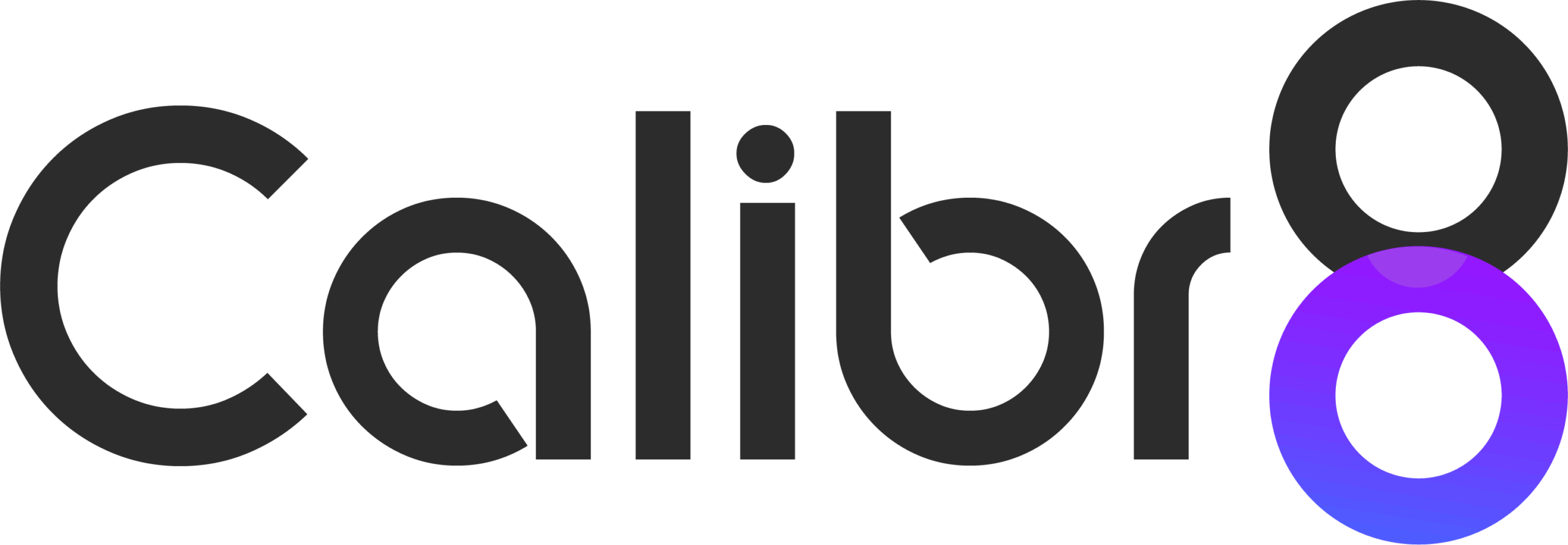Read time: 6 mins
Halloween is far from disappearing in Canada. Our latest research into Canadian Halloween consumer behavior reveals that 100% of Canadians celebrate the holiday—but how they participate, spend, and shop is shifting dramatically. From TikTok-inspired purchases to early-bird shopping and community-focused priorities, Canadians are balancing tradition, social influence, and economic realities like never before.
100% of Canadians celebrate Halloween. But nobody’s celebrating the same way.
When Zamplia surveyed 308 Canadians this October, we set out to answer a simple question: How are consumers navigating Halloween amid economic pressure, social media influence, and shifting priorities? What we discovered reveals something far more nuanced than declining participation or inflated spending-it’s a story of adaptation, community values, and the surprising power of social commerce.
The Bottom Line
Nobody’s canceling Halloween. Instead, Canadians are rewriting the rules:
✅ 67% spend under $100, but the top 3% are dropping $400+
✅ 23% have purchased Halloween items because TikTok told them to
✅ 33% prioritize premium candy for trick-or-treaters over their own costumes
✅ 40% now shop in August-September, matching traditional October shoppers
✅ 88% adapted their strategy rather than cutting Halloween entirely
This isn’t a story about belt-tightening. It’s about strategic spending, community generosity, and a holiday that’s evolved far beyond its commercial origins.
Three Types of Halloween Celebrators
When we asked Canadians how they participate in Halloween, three distinct personas emerged-each with vastly different spending behaviors and motivations.
Active Celebrators (47%)
These households embrace the full Halloween experience: costumes, decorations, trick-or-treating, and community involvement. They’re the backbone of neighborhood festivities and represent premium market opportunities across multiple product categories. Active Celebrators are most likely to shop early (August-September) and prioritize house decorations alongside premium candy.
Minimalists (32%)
Focused solely on the essentials—candy for trick-or-treaters—Minimalists participate but don’t go overboard. They’re practical, budget-conscious, and typically spend under $50. Despite their restraint, this segment prioritizes quality candy over quantity, with 68% selecting premium brands for neighborhood kids.
Halloween Fanatics (21%)
Full celebration mode. These are the households that transform their homes into haunted attractions, coordinate elaborate family costumes, and drive the neighborhood competition. Fanatics are 3x more likely to spend $200+, shop in August, and report that Halloween is a major annual event worth significant investment.
Key Insight: While participation is universal, how Canadians celebrate varies dramatically—and so does their spending. Brands that segment by celebration style (not just demographics) will outperform those treating Halloween as one-size-fits-all.
The Budget Reality: $50-$100 Is the New Normal
67% of Canadians spend under $100 on Halloween. But that number masks significant variance in what people actually buy—and who they’re buying it for.
Spending Breakdown
- 34% spend $50-$100
- 33% spend under $50
- 20% spend $100-$200
- 7% spend $200-$400
- 3% spend $400+ (the “Halloween Legends”)
The gap between the 67% spending under $100 and the 3% dropping $400+ reveals the most critical insight for brands: the biggest spenders aren’t just buying more—they’re buying differently.
High spenders prioritize:
- Epic house decorations (27%)
- Haunted experiences and attractions (19%)
- Hosting Halloween parties (12%)
Meanwhile, the majority (under-$100 spenders) focus on:
- Premium candy for trick-or-treaters (38%)
- Kids’ costumes (23%)
- Minimal decorations (15%)
Strategic Takeaway: Don’t chase volume at the expense of value. The top 10% of spenders represent nearly 30% of total Halloween revenue. Target them with premium experiences, elaborate décor, and early-bird shopping incentives.
TikTok Is Converting-And Brands Should Pay Attention
23% of Canadians have made a Halloween purchase because of TikTok. Not “considered.” Not “inspired by.” Actually purchased.
But here’s where it gets interesting: 19.5% are tempted but haven’t pulled the trigger yet. That’s your conversion opportunity.
TikTok Influence Breakdown
- 8.8% purchased multiple times (repeat TikTok buyers)
- 14.3% purchased once (first-time converters)
- 19.5% tempted but haven’t purchased yet ⬅️ Your goldmine
- 8.1% almost bought something but resisted
- 23.1% say TikTok doesn’t influence their shopping
- 26% don’t use TikTok
Among 25-34 year-olds, the conversion rate jumps to 41%-nearly double the national average. This demographic isn’t just scrolling; they’re buying.
What’s driving conversions?
- Costume hacks and DIY tutorials (57% of TikTok purchasers)
- Decoration trends and aesthetic inspiration (41%)
- Product reviews and recommendations (38%)
- The Strategy: TikTok isn’t just awareness-it’s a conversion channel. Brands that invest in creator partnerships, authentic product showcases, and shoppable content will capture that 19.5% sitting on the fence.
Community Beats Self: What Canadians Actually Prioritize
When forced to choose their #1 Halloween spending priority, 33% chose premium candy for trick-or-treaters—more than any other category.
Compare that to:
- 10% prioritizing their own costume
- 7% prioritizing haunted experiences
- 5% prioritizing parties
Canadians are spending on others, not themselves. This isn’t just generosity—it’s values-driven purchasing.
Why This Matters
Halloween has become a community-building ritual, not a self-indulgent holiday. The rise of neighborhood competitions, social media pressure to “keep up,” and multi-generational participation has shifted spending away from personal enjoyment and toward collective experience.
Brand Implication: Position your Halloween products as tools for community connection, not personal indulgence. Messaging that emphasizes “welcoming trick-or-treaters,” “impressing the neighborhood,” and “creating memories for kids” will outperform self-focused campaigns.
The Early Bird Revolution: Shopping Shifts Earlier
Nearly 4 in 10 Canadians (38%) now shop in August-September—a significant shift toward early Halloween preparation.
Shopping Timeline
- 6.5% shop in August
- 11.4% shop in early September
- 19.8% shop in late September
- 36.7% shop October 1-15
- 20.5% shop October 16+
- 3.2% shop on Halloween Day (pure chaos energy)
While October remains the dominant shopping window (57%), the rise of early-bird shoppers (38%) represents a strategic shift driven by deal-hunting and inventory concerns.
Why the shift?
- Better deals and availability (cited by 47% of early shoppers)
- Avoiding sold-out items (29%)
- Spreading out expenses (18%)
Strategic Opportunity: Retailers that launch Halloween inventory in July and incentivize early purchases (early-bird discounts, limited-edition items, pre-order guarantees) will capture the 40% planning ahead—and avoid the margin compression of October clearance sales.
Inflation Isn’t Stopping Halloween-It’s Changing It
88% of Canadians adapted their Halloween strategy rather than cutting it entirely. Here’s how:
Inflation Adaptation Strategies
- 38% Same budget, way less stuff
- 25% Shopping earlier for better deals
- 18% Getting creative with DIY solutions
- 12% Cutting Halloween budget completely
- 4% Spending more than ever (inflation? What inflation?)
- 4% Using Halloween as stress relief from inflation
The ”same budget, way less stuff” strategy is the dominant response—and it reveals a critical insight: Canadians aren’t willing to sacrifice Halloween, but they are making trade-offs.
What gets cut first?
- Elaborate decorations (43%)
- Personal costumes for adults (31%)
- Premium candy upgrades (18%)
What stays protected?
- Candy for trick-or-treaters (71%)
- Kids’ costumes (58%)
- Core decorations (pumpkins, lights) (45%)
Brand Strategy: Offer ”good-better-best” pricing tiers that allow consumers to maintain tradition without breaking the bank. Value packs, DIY kits, and multi-year reusable décor will resonate with the 38% stretching their dollars.
Generational Differences Are Real-And Surprising
When we asked Canadians to identify which generation celebrates Halloween most intensely, the answers revealed fascinating self-perceptions:
- 32% said Millennials (1981-1996) – “peak Halloween energy”
- 26% said Gen X (1965-1980) – “doing it for the kids”
- 20% said Gen Z (1997-2012) -“social media pressure”
- 6% said Boomers (1946-1964) – “grandparent spoiling mode”
But here’s the twist: each generation celebrates for entirely different reasons.
Millennial Motivation (Ages 29-44)
Nostalgia. This generation grew up during Halloween’s commercialization peak (1980s-1990s) and now recreates that magic for their own kids. They’re the highest spenders on decorations and kids’ costumes, and they dominate the “Halloween fanatic” category.
Gen X Motivation (Ages 45-59)
Parental obligation. Gen X participates because their kids expect it. They’re practical spenders (mostly under $100) and prioritize candy and kids’ costumes over elaborate personal involvement. Yet 34% still identify as “active celebrators”—proving they’re more invested than they admit.
Gen Z Motivation (Ages 18-28)
Social media validation. Gen Z celebrates Halloween because everyone else is, and FOMO is real. They’re the most likely to make TikTok-influenced purchases (41%), prioritize Instagrammable moments, and spend on personal costumes over family activities.
Boomer Motivation (Ages 60+)
Grandparent mode. Boomers celebrate when grandkids are involved. They’re selective participants-only 23% identify as active celebrators-but when they do engage, they’re surprisingly high spenders (18% spend $200+), focusing on premium candy and experiences for grandchildren.
Marketing Takeaway: Don’t market “Halloween” as a monolith. Segment by generation and speak to their unique motivations:
- Millennials: Nostalgia + creating memories
- Gen X: Convenience + kid-focused value
- Gen Z: Aesthetic + social validation
- Boomers: Spoiling grandkids + selective quality
The Candy Confession: 81% Admit They’re Eating It
81% of Canadian adults admit they eat Halloween candy meant for trick-or-treaters. But the breakdown is hilarious:
- 45% say “maybe 10% for taste testing” (sure, Jan)
- 22% admit “about half is definitely for me”
- 6% confess “most of it, with some left for kids”
- 5% boldly declare “it’s ALL for me, kids get whatever’s left”
- 19% claim “none, it’s all for trick-or-treaters” (liars or saints?)
The Strategic Angle: Adult candy preferences matter. Brands that market “premium” or “adult-friendly” Halloween candy (dark chocolate, gourmet options, nostalgic retro brands) can capture the 73% who are definitely eating it themselves.
Methodology
This research was sponsored and conducted by Zamplia among 308 Canadian adults aged 18-65 via an online survey between October 18-24, 2025. The study employed a non-probability opt-in panel sample, with data weighted to Canadian census demographics by age, gender, and region. Because this survey used a non-probability sample, a margin of error cannot be calculated, and results are directional and should not be generalized to the entire Canadian population.
What This Means for Brands
Halloween isn’t dying-it’s evolving. And the brands that win will be the ones that understand how it’s changing:
✅ Segment by celebration style, not just demographics. Active Celebrators, Minimalists, and Fanatics have different needs, budgets, and motivations.
✅ Invest in TikTok as a conversion channel. 23% have already purchased, and another 19.5% are on the fence. Shoppable content and creator partnerships will close that gap.
✅ Position products as community tools, not personal indulgences. Canadians are spending on others-candy for neighbors, costumes for kids, decorations to welcome trick-or-treaters.
✅ Launch earlier and incentivize August-September shoppers. 40% are shopping before October, and they’re the highest-intent buyers. Capture them before they finalize plans.
✅ Offer value without sacrificing tradition. 88% are adapting to inflation, not canceling Halloween. “Good-better-best” pricing, DIY kits, and multi-year reusable items will resonate.
✅ Tailor messaging by generation. Millennials want nostalgia. Gen X wants convenience. Gen Z wants Instagram moments. Boomers want to spoil grandkids. Speak their language.
The Verdict
Halloween is one of the few holidays where tradition and innovation coexist. Canadians are adapting, spending strategically, and leaning into community-even as economic pressure reshapes their budgets.
The brands that recognize this shift-and build strategies around adaptation, not abandonment-will capture the $3.8 billion Canadian Halloween market.
Want more information and details? Contact us or book a demo today.
FAQs
Yes, 100% of surveyed Canadians celebrate Halloween, but most are adapting their spending and strategies rather than abandoning the holiday.
Nearly a quarter of Canadians have purchased items directly because of TikTok, with an additional 19.5% considering purchases, making it a critical conversion channel for brands.
Segment by celebration style, leverage early shopping trends, highlight community-focused messaging, and offer value-driven options like DIY kits or reusable décor to resonate with different spending tiers and generational motivations.
About Zamplia
Zamplia is a market research platform that connects brands with real consumers to uncover insights that drive smarter decisions. From product testing to concept validation, we help companies understand what their customers really think-before it’s too late.


